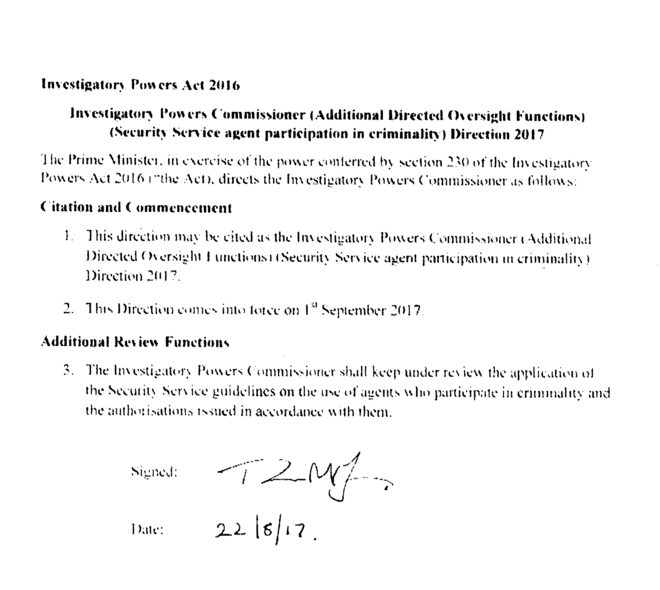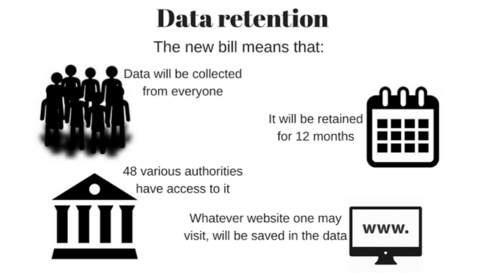2016 Investigatory Powers Act
| Type | law |
|---|---|
| The so-called "Snoopers' Charter", which effectively legalised universal surveillance by the UK Deep state. | |
Not to be confused with the 2000 Regulation of Investigatory Powers Act
The Investigatory Powers Act 2016 (nicknamed the Snoopers' Charter) legalised a lot of mass surveillance.
It also addressed the legal status of MI5's use of criminal activity, as was revealed in March 2018 after the UK government lost a 7 month legal battle.[1]
De Facto legalisation of Parallel Construction in UK courts
- Full article: Parallel Construction
- Full article: Parallel Construction
The Register observed that the Investigatory Powers Act 2016 by prevents evidence being revealed or questioned in court, effectively opens the door to parallel construction with evidence obtained through mass surveillance under the act.[2]
Criminal activity by agents of Intelligence Services

Investigatory Powers Act 2016
Investigatory Powers Commissioner (Additional Directed Oversight Functions)
(Security Service agent participation in criminality) Direction 2017The Prime Minister, in exercise of the power conferred by section 230 of the Investigatory Powers Act 2016 ("the Act), directs the Investigatory Powers Commissioner as follows:
Citation and Commencement
- 1. This direction may be cited as the Investigatory Powers Commissioner (Additional Directed Oversight Functions (Security Service participation in criminality) Direction 2017
- 2. This Direction comes into force on 1st September 2017.
Additional Review Functions
- 3. The Investigatory Powers Commissioner shall keep under review the application of the Security Service guidelines on the use of agents who participate in criminality and the authorisations issued in accordance with them.
Date:
' [3]
- ↑ https://www.theguardian.com/uk-news/2018/mar/02/mi5-agents-are-allowed-to-commit-in-uk-government-reveals
- ↑ "The UK's Investigatory Powers Act allows the State to tell lies in court".Page Module:Citation/CS1/styles.css must have content model "Sanitized CSS" for TemplateStyles (current model is "Scribunto").
- ↑ https://www.ipco.org.uk/docs/20180301%20PM%20direction%202.pdf Investigatory Powers Commissioner's Office

